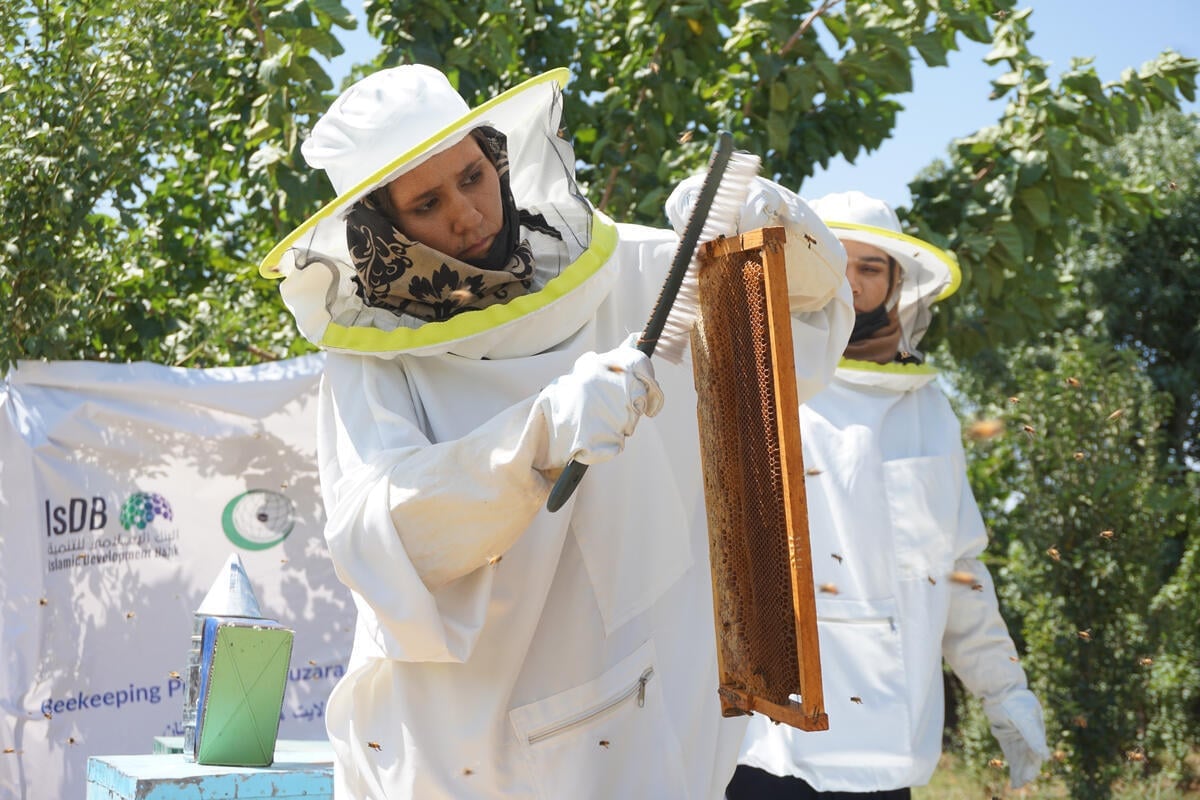Stranded Afghans get shelter from sandstorms
Stranded Afghans get shelter from sandstorms

CHAMAN, Pakistan, June 24 (UNHCR) - Aid workers struggling to help stranded Afghans living just inside south-western Pakistan's Chaman border crossing distributed tarpaulins and poles today to better protect the refugees from sandstorms plaguing the frontier site.
Since February, thousands of Afghans stuck at Chaman have been living under makeshift shelters of threadbare canvas and shredded plastic, sleeping rough with little more than muddy quilts separating them from the hard earth.
High winds plague the drought-affected border region where temperatures frequently hit 45 degrees Celsius. Winds descending from the 2,000-metre Kojak hills whip up dust storms that create serious respiratory and eye problems for people living in the area. Visibility due to the airborne sand sometimes drops to only 20 metres.
UNHCR's team leader at Chaman said the shelter material would help the refugees protect themselves from the sun, as well as the wind and dust storms.
"It will give them the necessary shade," said Tor-Eilif Emaus of the UN refugee agency. "When they only have the small makeshift shelters, they have problems resting during the day."
In an effort to ascertain the number of people at the Chaman camp, UNHCR staff on Sunday completed a wrist-banding operation that counted 25,693 Afghans on the barren site that stretches for up to a kilometre from Pakistan's border with Afghanistan.
Starting Tuesday, aid workers plan to distribute 20 days of food rations from the UN's World Food Programme to the Afghans at Chaman. The refugees have received food aid fairly regularly, and authorities in Pakistan's Baluchistan province sympathise with the refugees' plight, aid workers said.
In order to improve conditions at Chaman, relief agencies have already built 350 combined latrines/washrooms, with 40 more planned, but that still leaves only one latrine for 64 people.
UNHCR's Emaus says the agency plans an additional 600 latrines to combat diarrhoea outbreaks among the refugees. The medical relief group MSF-Holland operates health facilities and supplementary feeding centres for them, but malnutrition and vitamin deficiencies are a problem for the children, aid workers said.
Many of Chaman's Afghans crossed the frontier into Pakistan in early February, hoping to get into newly-opened refugee camps in the nearby border belt that currently shelter more than 76,000 post-September 11 refugees. In late February, the Pakistan government declared it would no longer allow UNHCR relocate the new arrivals from the windswept zone that aid workers refer to as the "waiting area".
Many of the refugees stuck at Chaman had fled the effects of the long drought devastating much of Afghanistan. Despite recent rains in parts of the country, the drought persists throughout the south, destroying the livelihood of both farmers and herders who live in the region but who can no longer find pasture or water for their animals.
Among Chaman's Afghans are also ethnic Pashtuns who say they were forced from their homes in northern Afghanistan by bandits or anti-Taliban groups, or simply fled fearing violence.
Hasadar, an ethnic Pashtun, arrived at the Chaman site three months ago after fleeing Khojkana village in northern Afghanistan's Shiberghan province. He and his family left the region with 41 other families when raiders swept through his village, taking his herd of 500 animals and stealing from other families as well. When his family stopped in Pul-i-Khumri, thieves again raided their camp, taking valuables like watches and money.
Hasadar refused to stop in predominantly-Pashtun Kandahar province, and headed southwards towards Chaman, not realising that he would soon find himself stranded like thousands of others. "We heard that the Pashtuns were all headed towards Pakistan, so we just went along," he said.
UNHCR hopes that it can find a solution for the Afghans stuck at Chaman, including possibly assisting some people to return to areas in Afghanistan where they feel safe. More than 2,100 people have so far opted to repatriate from the zone, mostly to southern Afghanistan.
Returns from the "waiting area" have dropped off in recent weeks, putting further pressure on the Pakistan authorities and UNHCR to find new solutions to another desperate situation.








